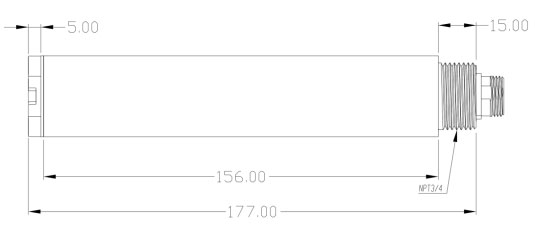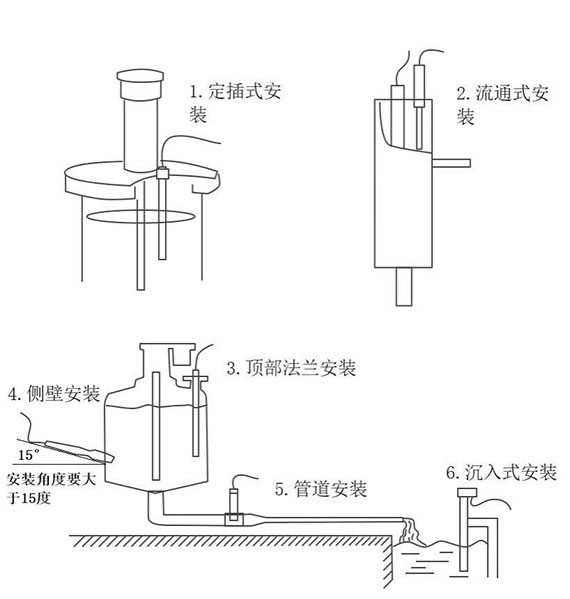Tianqiong Sensor IOT Technology Co., Ltd
Sales Manager:Ms. Emily Wang
Cel,Whatsapp,Wechat:+86 15898932201
Email:info@fengtutec.com
Add:No. 155 Optoelectronic Industry Accelerator, Gaoxin District, Weifang, Shandong, China

Sales Manager:Ms. Emily Wang
Cel,Whatsapp,Wechat:+86 15898932201
Email:info@fengtutec.com
Add:No. 155 Optoelectronic Industry Accelerator, Gaoxin District, Weifang, Shandong, China

Model:FT-S20
Brand:tianqiong
one.Water transparency sensor application environment description
water transparency sensor is suitable for online monitoring of water transparency in inland rivers, lakes and reservoirs, surface water in cities and aquaculture industries.The scattering or absorption properties of light are used to measure transparency in water.It has high sensitivity, fast response and real-time monitoring capabilities, and is widely used in water quality monitoring and sewage treatment.
Signal output: RS485 (MODBUS-RTU).
Infrared LED light source, strong anti-interference ability.
Internal signal isolation technology has strong interference.
Good reproducibility, thermal stability, low drift, small size, fast response speed
Easy to install, simple, 3/4NPT pipe threads, easy to sink-in installation or install in pipes and tanks
Stable performance and long service life
IP68 waterproof standard
two.Water transparent sensor technical performance and specifications
1.Technical parameters
| Measurement principle | Scattering light method |
| Signal method | RS485 (MODBUS-RTU) |
| Measurement range | 50~1000mm |
| Measure resolution | 1mm |
| Measurement accuracy | ±5% (depending on sludge homogeneity) |
| Housing material | Glass and ABS |
| Cable length | Standard 5 meters |
| Power supply voltage | 12-24VDC (the product power consumption is about 0.4W when powered by 12V) |
| Calibration method | Two-point calibration |
| Measurement environment | Temperature 0~50℃ (no freezing), <0.2MPa |
| Waterproof grade | IP68 |
| Installation method | Immersive mounting, NPT3/4 thread |
2.Water transparent sensor size diagram

three.Water transparent sensor installation and electrical connection
1.Installation

Note: The sensor cannot be installed inverted or horizontally when installed, and should be installed at least 15 degrees above the angle of inclination.
2.Electrical installation
The cable is a 5-core shielded wire, line sequence definition: brown-power cord (12~24VDC)
Black-ground (GND)
Blue-485A Green-485B
Yellow - 4-20mA current output (can be suspended if not used)
Before powering on, carefully check the wiring sequence to avoid unnecessary losses caused by wiring errors.
Four.Water transparency sensor maintenance and maintenance
1.Use and maintain
Conventional electrodes require periodic cleaning and calibration, and the maintenance cycle is determined by the customer according to their working conditions.Conventional electrode cleaning methods: Use a soft brush to remove attachments (be careful to avoid scratching the electrode surface), then clean with distilled water, and then perform calibration operations.
In the fields of solar energy resource assessment and meteorological monitoring, the Fully Automatic Solar Spectrometer is revolutionizing traditional measurement methods. This instrument combines multi - spectral filters with thermopiles to capture radiant energy within the spectral range of 280 to...
Traditional weather stations often suffer from limitations such as complicated installation and fixed locations, making it difficult to meet the immediate data needs for on-site emergency weather events, field scientific research, or temporary activities. The FT-BQX6 Portable Weather Station was des...
The Anemometer for Drones is a specialized device designed for low-altitude meteorological monitoring, with its core technology operating on the principle of ultrasonic resonance. This principle works as follows: the ultrasonic generator inside the device emits sound waves of a specific frequency. W...
In the fields of meteorological monitoring and hydrology, the piezoelectric rain gauge and the Radar Precipitation Sensor Rain Gauge Distrometer are commonly used rainfall monitoring devices. Today, the author will compare the differences between the two.The piezoelectric rain gauge works by u...